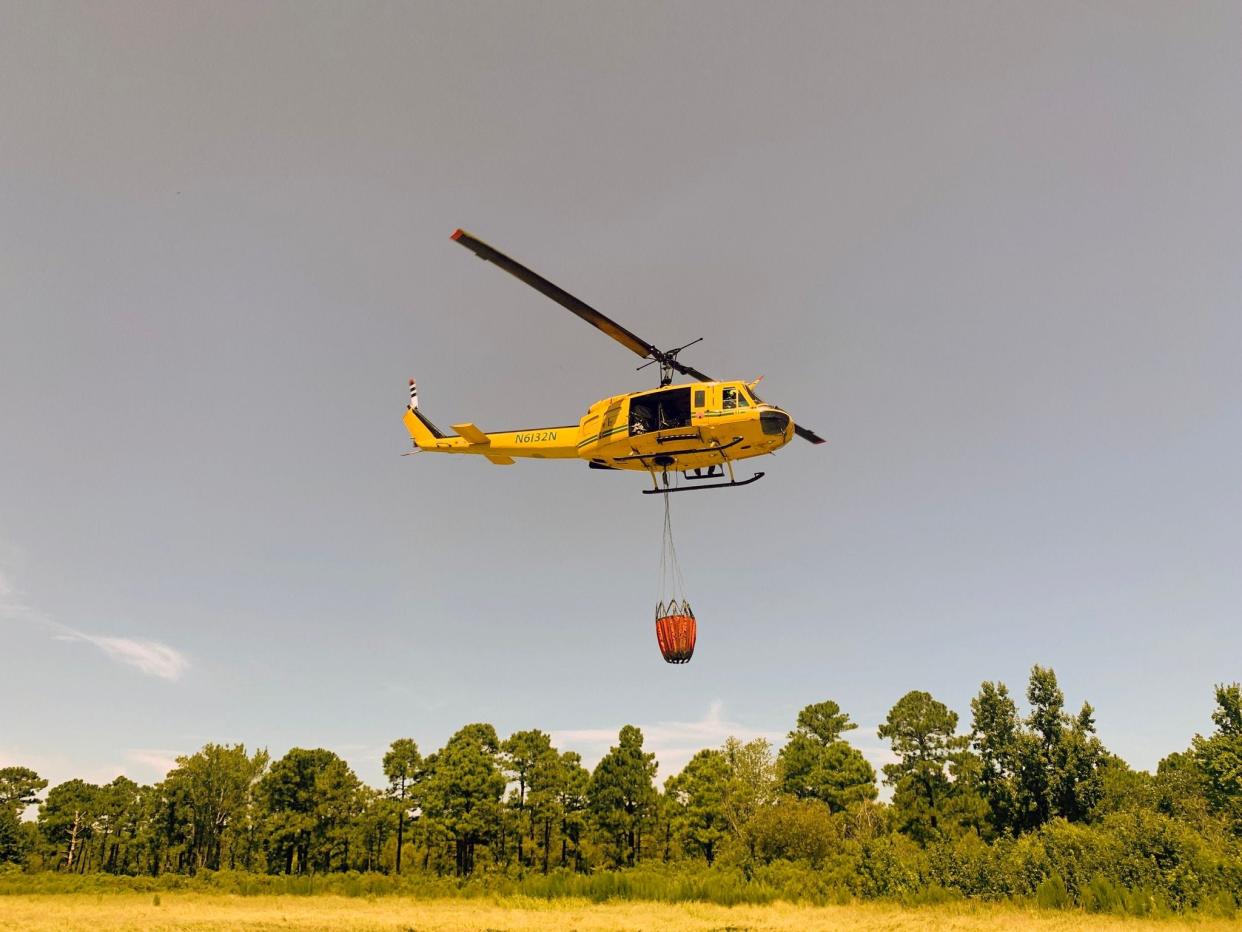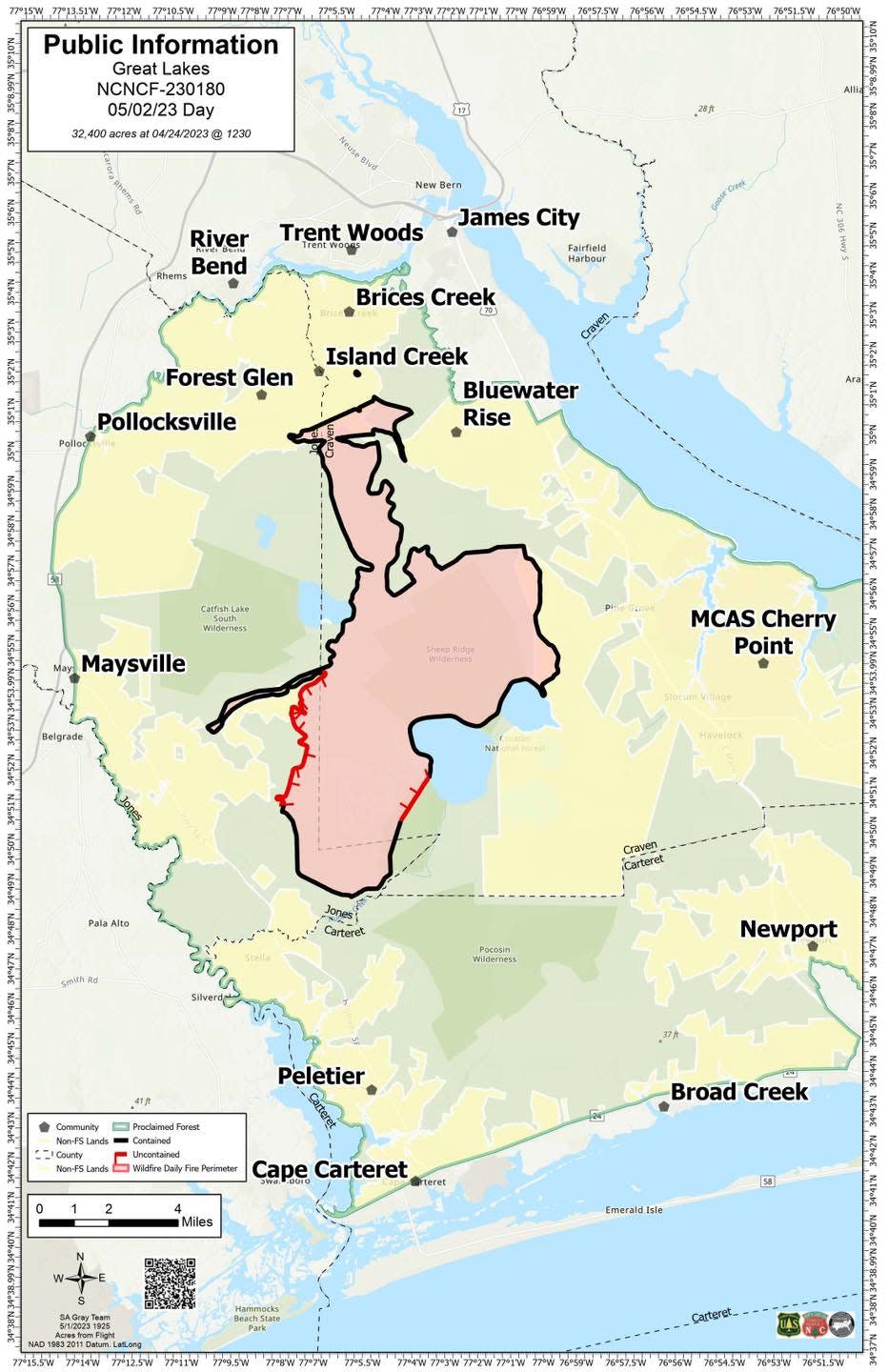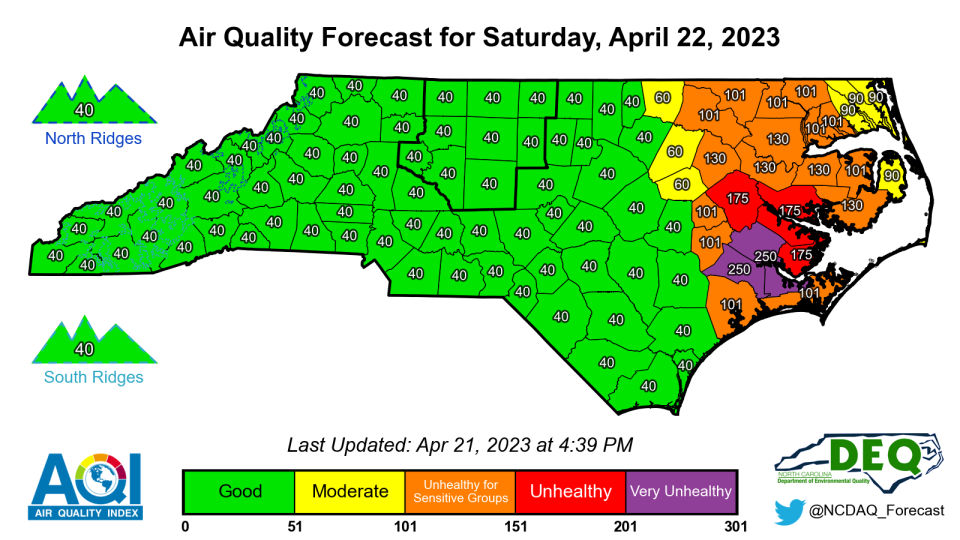The challenge of managing Eastern NC's forests amid population growth, changing climate

The air was thick with the smell of ash as gray-black, inky smoke clouds reached into the sky from the wood fire just off North Kerr Avenue in northern New Hanover County.
Several piles of vegetation had been hit by lightning on Sunday as a fast-moving storm swept through the region. The ensuing blaze, which caught concerned residents by surprise, was still smoldering and producing significant amounts of smoke that could be seen and smelled across much of the Murrayville and Wrightsboro areas as of Wednesday.
But the North Kerr fire, which was contained to several piles of timber at the mulching business, was relatively small and not threatening any people or structures. It was a different story 100 miles up the coast, though, where the Great Lakes Fire continues to burn in the Croatan National Forest 15 days after it started.
As of Wednesday morning, the N.C. Forest Service said the large wildfire had charred an estimated 32,400 acres and was 65% contained.

The big blaze is a reminder that Eastern North Carolina is prime fire country, a natural and needed element of the Cape Fear region's environment − and one that will occur regularly whether residents like it or not.
From 2022: In the line of fire -- A view from the frontlines of the Holly Shelter Game Land wildfire
Why is fire a necessary element in Eastern N.C.?
In August 2022 lightning sparked a fire in the Holly Shelter Game Land in Pender County. Within a few days the blaze had grown to nearly 1,200 acres, and smoke and ash was impacting nearby neighborhoods.
The fire, dubbed the "Juniper Road Two Fire," burned an area that had burned back in 2011. That earlier fire, which torched about 30,000 and also was started by lightning, helped absorb some of the vegetative fuel and other organic material that could help fires grow quickly into monster blazes.
Wildfires also are necessary for a number of Southeastern North Carolina's indigenous species, including the longleaf pine and Venus' flytrap, to thrive and reproduce. Without periodic burns, the areas these fire-adapted and dependent species need can become choked with other vegetation, damaging native environments and knocking local ecosystems out of whack.
Is that why officials hold controlled burns?
Periodic burns help keep healthy environments and remove fuel sources to prevent wildfires from becoming dangerous, out-of-control blazes that can quickly threaten people and properties. Such monster blazes don't just occur in less populated areas of Eastern North Carolina, either. In 1986 a fire in Holly Shelter burned 73,000 acres within the game lands and rained ash and smoke down on Wilmington.
Some areas that see these regular controlled burns include Halyburton Park in Wilmington, Carolina Beach State Park, Orton Plantation in Brunswick County, the University of North Carolina Wilmington, state game lands across the region, and the Green Swamp and Boiling Spring Lake preserves run by The Nature Conservancy.
But conducting controlled burns, however, isn't easy at the best of times. Many fires, especially those burning organic-rich pocosin areas, are smoky and leave the air full of heavy particles. But with the public's knee-jerk reaction in many cases to put out a fire as soon as smoke is seen instead of letting it burn in a controlled manner, officials say we're simply kicking the proverbial can down the road.

Another issue is where people are seeking to live. As the Wilmington area's popularity grows, so does the number of people who are living within or adjacent to forested areas that either haven't burned in decades or are becoming increasingly difficult to manage. The population of Pender County has jumped from 41,000 in 2000 to an estimated 62,600 in 2023, with most of those new residents living along the county's coastal plain and close to Holly Shelter.
Brunswick County, which is the seventh-fastest growing county in the United States and includes huge tracts of forested areas, has seen its population increase from 73,700 in 2000 to an estimated 153,000 last summer.
New data: Brunswick population growth among highest in country, outpacing New Hanover
What about climate change?
That's likely to make a tough situation even harder for officials looking to balance the health and welfare needs of a growing community with the environmental necessities of ecosystems that have developed around and needing periodic burns.
Climatologists forecast that North Carolina will see a hotter and drier climate in the coming decades as the planet continues to warm. That will include extended periods of dry weather mixed with infrequent heavy rainfall events, possibly tied to stronger and more powerful tropical weather systems.
Adding another challenge is that low wind and high humidity days, which are the preferred times to conduct controlled burns, are expected to decrease in coming decades due to warmer temperatures.
Reporter Gareth McGrath can be reached at GMcGrath@Gannett.com or @GarethMcGrathSN on Twitter. This story was produced with financial support from 1Earth Fund and the Prentice Foundation. The USA TODAY Network maintains full editorial control of the work.
This article originally appeared on Wilmington StarNews: Why Eastern NC's forests need to burn despite residents' worries

